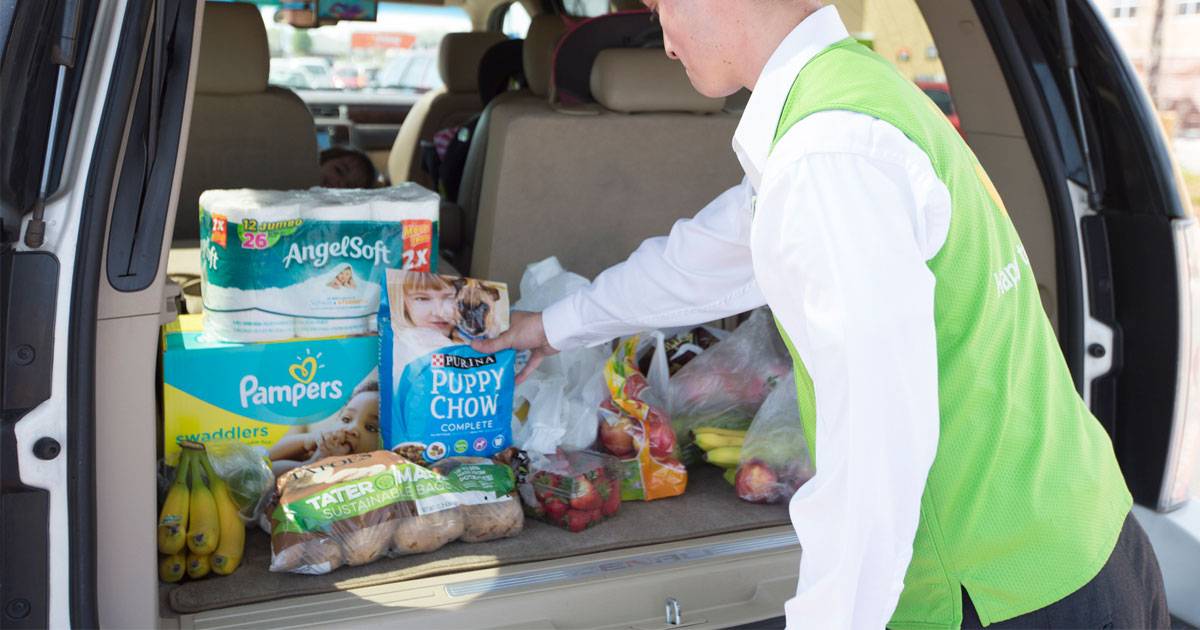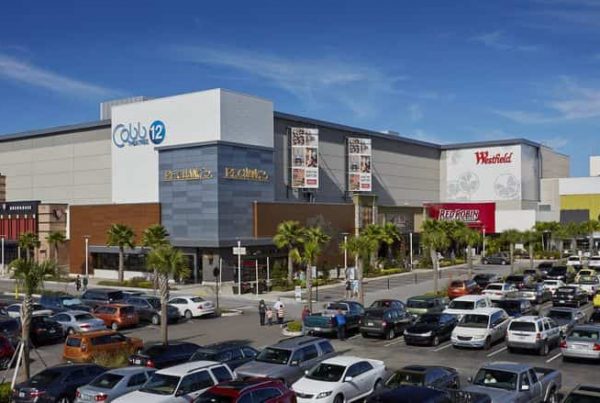By Joel Groover
Contributor, Shopping Centers Today
As supermarket chains race to offer last-mile fulfillment of online orders, they are leveraging one strategic advantage in particular: their own stores, which are often situated in open-air shopping centers located only a mile or so from their customers’ homes.
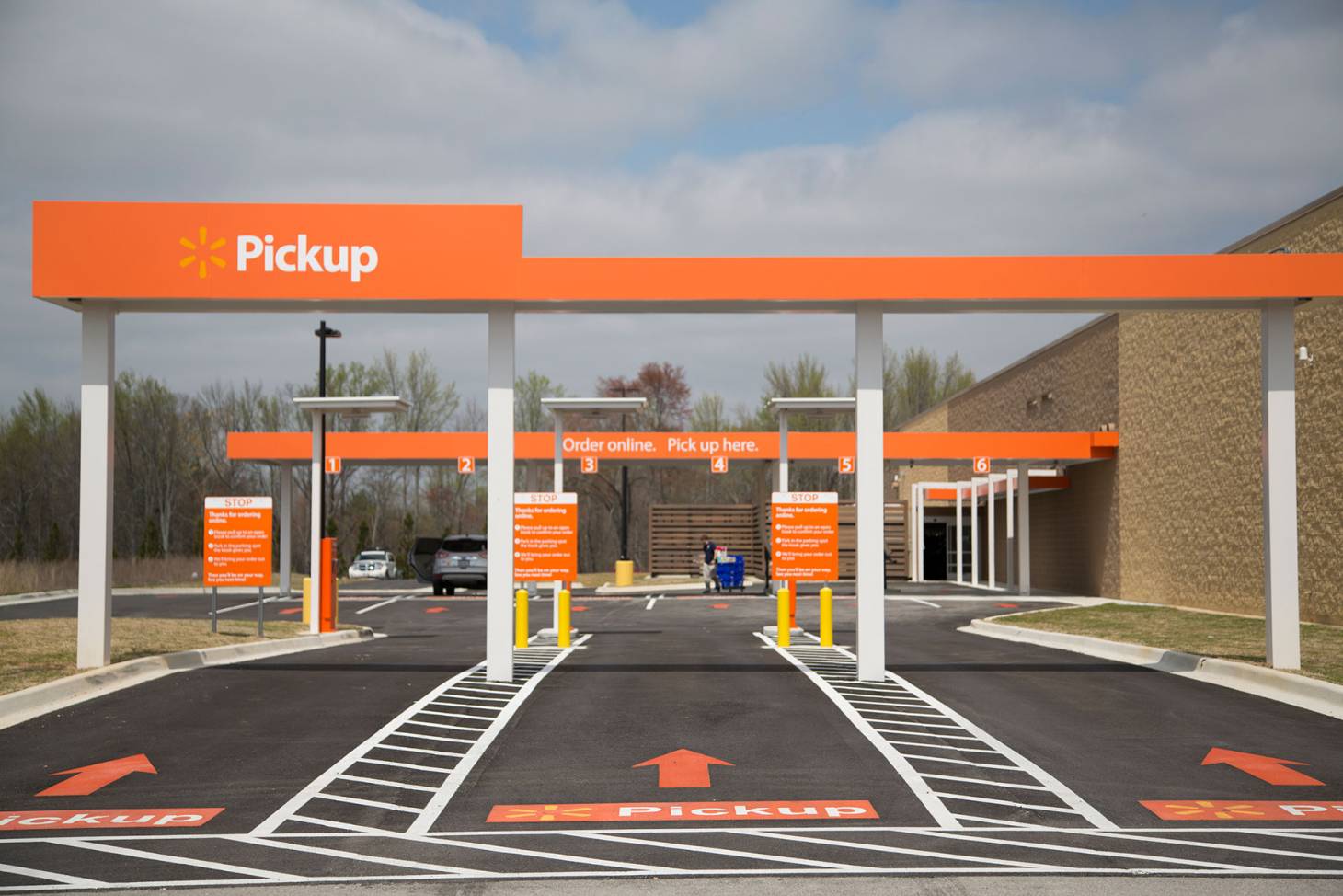
The value of such real estate came into sharper focus this past summer, after Amazon.com bought Whole Foods Market for $13.7 billion, according to Garrick Brown, Cushman & Wakefield’s director of retail research for the Americas. To fulfill online grocery orders in dense urban and suburban markets around the U.S., says Brown, Amazon could have bought or retrofitted industrial buildings in those areas, outfitting them with coolers, freezers and other infrastructure, all at tremendous expense. Whole Foods’ 460 stores, on the other hand, were already sitting within a 10-mile radius of an estimated 144 million shoppers. “If you look at the final-mile challenges in grocery, it makes perfect sense that Amazon pulled the trigger on the Whole Foods deal,” said Brown.
That high-profile transaction has encouraged traditional supermarkets and discounters to focus harder on last-mile fulfillment strategies rooted in their existing stores and real estate, experts say. Top grocery sellers Albertsons, Kroger, Publix, Target and Walmart have all announced store-based initiatives related to online grocery delivery or pickup in the months since Amazon bought Whole Foods. “That deal has changed the economics for everyone,” Brown said. “All of the traditional players now have a sense of urgency about it — hence some of these moves we’ve seen over the last few months — and I predict this will ramp up going into 2018.”
During a panel discussion last year at ICSC’s New York Deal Making, Tim Baker, regional vice president of real estate for Albertsons, touted the advantages behind grocery chain access to open-air real estate near customers. “We’re the last mile,” he said. “We have 2,500 ‘last mile distribution centers’ in open-air shopping centers.”
But the challenge for supermarket chains is to find the right way to use open-air real estate for these purposes, says Ben Conwell, head of Cushman & Wakefield’s e-commerce fulfillment practice. And landlords will need to accommodate grocers’ experiments with parking, drive-through lanes and outparcels set aside for delivery or pickup, he says. And if more grocers start fulfilling online orders of nonfood items — as could happen at Amazon-owned Whole Foods — landlords could face periodic objections from other tenants on the grounds that such sales violate exclusivity lease clauses.
But thanks in part to the growth of specialists in third-party delivery, closing the last mile need not necessarily be hugely disruptive for either grocers or landlords. According to Conwell, a clear trend of late is for grocers to leverage the infrastructure and expertise of such startups in efficient ways, either through strategic partnerships or outright acquisitions. Simply put, he says, teaming with third parties is cheaper, easier and less risky than trying to cultivate grocery-delivery capability in-house.
Albertsons, for one, announced this past November that same-day-delivery specialist Instacart will begin delivering from some 1,800 Albertsons stores by the middle of this year. San Francisco–based Instacart, which also works with the likes of Costco, HEB and Publix, enables users to buy groceries online and have them delivered by personal shoppers. Other grocers are also ramping up their partnerships with various third parties. During Kroger’s third-quarter 2017 earnings call, on Nov. 30, Chairman and CEO William Rodney McMullen touted the growing importance to Kroger of home delivery. Partnerships with Instacart, Roadie, Strip and Uber have enabled the Cincinnati-based chain to bring delivery capability from zero Kroger stores to 300 in a little over a year, according to a Seeking Alpha transcript of McMullen’s comments. “We have incredibly convenient locations and platforms for pickup and delivery within one to two miles of our customers,” McMullen noted on the call.
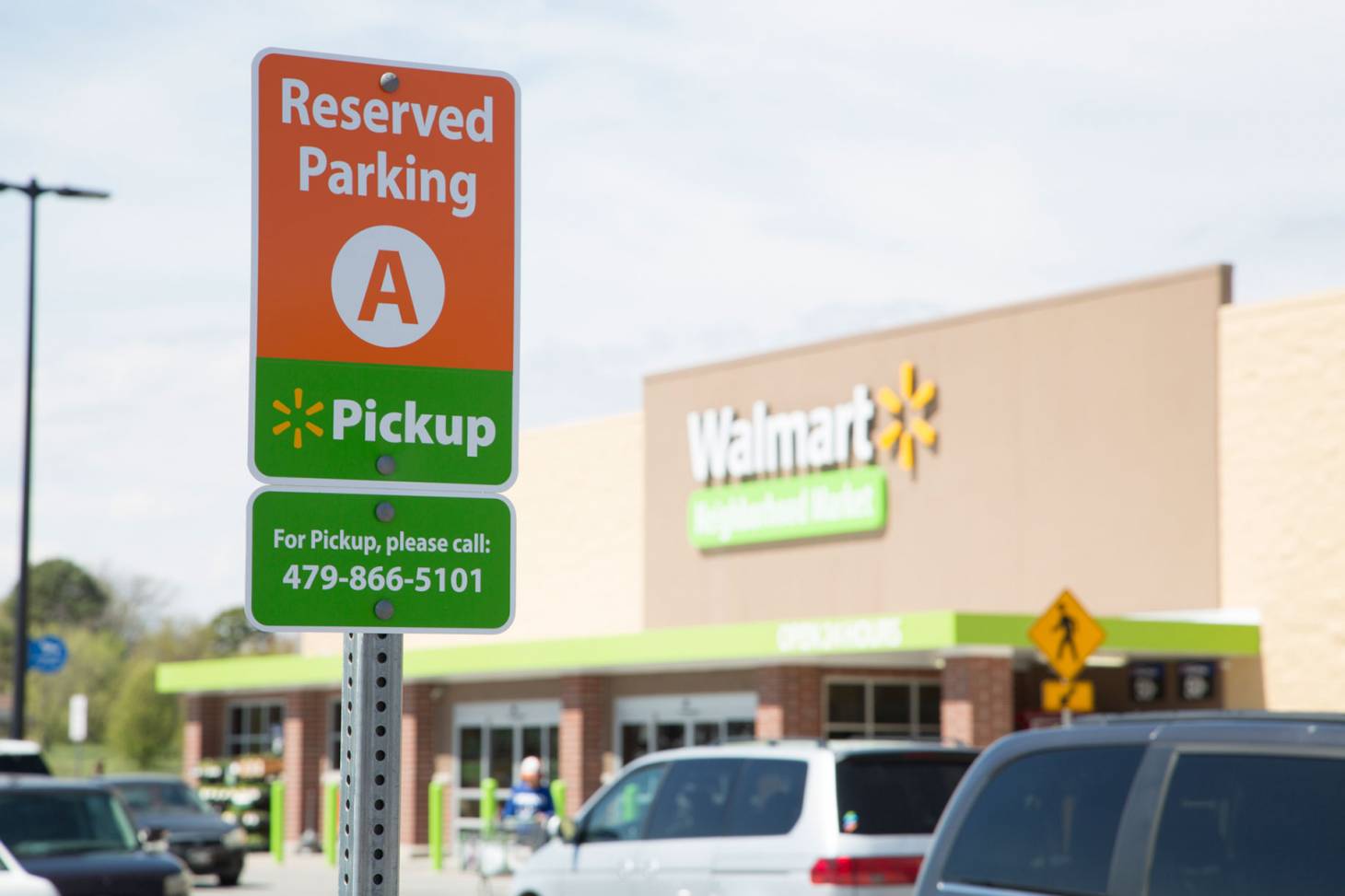
Some grocery sellers are opting to buy third-party delivery startups outright. This past December Target Corp. announced plans to acquire one of the fastest-growing third-party delivery companies in the U.S. — Birmingham, Ala.–based Shipt — for $550 million. Target’s goals include making same-day delivery of groceries and other goods an option at most of its 1,400 stores by the 2018 holiday season. The Shipt acquisition followed Target’s purchase last year of San Francisco–based Grand Junction, a software company specializing in local and same-day delivery logistics.
For its part, Albertsons announced plans last fall to buy meal-kit delivery service Plated, reportedly for up to $200 million. But either forming partnerships with or acquiring meal-kit startups such as Blue Apron, HelloFresh, Home Chef or Sun Basket could prove to be a boon for U.S. supermarkets, says Brown, because these operators already boast delivery know-how and a loyal clientele. “The smartest way for traditional grocers to ramp up their e-grocery offering would be through marriages of some sort with the meal-kit guys,” Brown said. Moving forward, he says, grocers could slash the cost of such services by charging food brands for the opportunity to place their products in the kits. “You could point out to the consumer that it was Boar’s Head meats, let’s say, that you were using in that kit,” he said. “I would not be surprised if we were to see a lot more movement on this front.”
Observers are intrigued also by an ongoing test at three Walmart stores (two in New Jersey and one in Arkansas) in which employees volunteer to deliver online orders as they drive home from their regular shifts. With 4,700 stores across the country, Walmart employs about 1 million people. In a blog post published this past June, Marc Lore, president and CEO of Wal-Mart Stores’ U.S. e-commerce operations, cites the strategic advantages of real estate in offering home delivery. Walmart’s portfolio, he notes, puts the retailer within 10 miles of 90 percent of the U.S. population. “Now imagine all the routes our associates drive to and from work and the houses they pass along the way,” Lore wrote. “It’s easy to see why this test could be a game-changer.”
In making deliveries, crowd-sourced drivers must travel to various stores, pick up packages and then take them to customers’ homes. But Walmart employees have a head start, Lore writes, because they can begin their last-mile journeys from the store. “Once they’re done working at the store for the day, they pick up the packages from the backroom, load them into their vehicle, enter the delivery addresses into the GPS on their phone and head toward home,” he wrote.
The idea is promising, given Walmart’s impressive distribution system, store network and ability to dispatch an army of delivery drivers, says Joseph McKeska, co-founder and president of Elkhorn Real Estate Partners. The Oak Brook, Ill.–based firm, a joint venture with A&G Realty Partners, helps grocers and retail real estate investors optimize their portfolios. “The Walmart experiment here really is intriguing to me, because it does potentially solve the last-mile problem,” McKeska said.
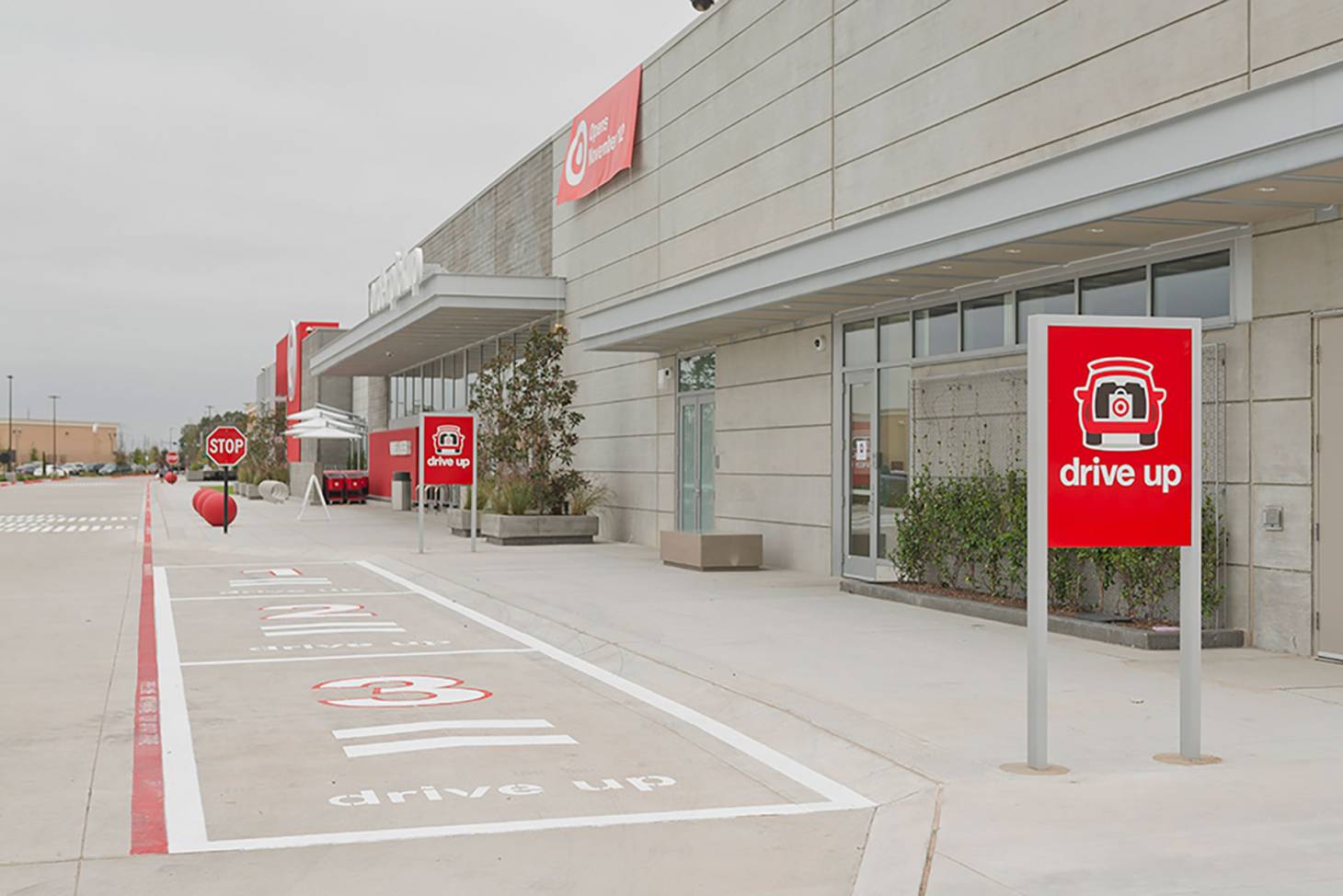
In addition to experimenting with approaches to delivery, top U.S. grocery sellers also aim to promote another solution to the problem: encouraging online shoppers to cover the last mile themselves and pick up their orders at the store. Kroger has been particularly aggressive in rolling out its ClickList click-and-collect option. During Kroger’s third-quarter earnings call, McMullen said the company is on track to offer click-and-collect at roughly 1,000 stores and that the service is a strong driver of Kroger’s digital revenues overall. Publix, for its part, launched a curbside pickup initiative this past September at test stores in Florida and metro Atlanta. Target, meanwhile, is testing its Drive Up click-and-collect service in 50 locations around the Twin Cities, with plans to expand the test this year.
Click-and-collect is an attractive option for grocery sellers because of its much-lower cost and its simpler logistics, says Rachel Elias Wein, president of WeinPlus, a real estate consulting firm. “Any chance that you have for the customer to be that last-mile delivery person, take it, because you’re going to save money,” she said. “You also get the additional benefit of impulse purchases once customers get to the store. There is a significant increase in sales when people pick up in-store, and also when they make in-store returns.”
This helps explain why Walmart last year began offering discounts on certain online-only merchandise for those who choose click-and-collect over home delivery, Wein points out. “If you pick it up in the store, then on some of these big-ticket purchases, you are getting a significant discount,” she said. “That matters, given all of the price wars of today.” In a blog post published last June on Walmart.com, Lore describes discounts of up to $50 for costly items like a $1,700 television. “Plus,” said Wein, “it’s during pickup that you remember you also need a wall mount, cables and maybe even speakers, all driving up the transaction value.”
As store-based fulfillment of online orders continues to grow, so does the potential need for retailers to reconfigure space in their stores, or for landlords to make changes to the parking lot, experts say. According to McKeska, so far the effects of retailers’ store-based fulfillment strategies on real estate have been quite limited: To make things easier and faster for Instacart or Shipt delivery people, a grocery might put coolers and dry-storage lockers in front-of-the-store alcoves; to improve the efficiency of a click-and-collect program, a chain might install a parcel pickup lane or set aside spaces for dedicated customer parking or grocery loading. Moving forward, though, Amazon and traditional discounters and supermarkets alike are clearly contemplating new ways to integrate fulfillment of online orders into stores of the future, McKeska says. “If these things truly take off and reach a high-enough percentage of sales, it might make sense to build a different store format,” he said.
For landlords, the ideal situation would be one in which fulfillment of online orders buoys demand among grocers for leasable space, says Wein. Hypothetically, a grocer of the future could set aside something like 30,000 square feet for customer-facing space and 20,000 square feet for back-end fulfillment of online orders, she says. “My take would be that, yes, we’re going to see more retailers utilizing their stores as mini distribution centers,” Wein said. “But while it seems likely that this could impact store footprints, it’s just too early to tell if this will be significant.”
In the meantime, the task for grocers and landlords is to figure out what works best by continuing to experiment with last-mile delivery and pickup. In some cases, Conwell says, this will prove harder than expected. Online shoppers, for instance, do not always buy the same things as those who stroll the aisles of physical stores. “Getting the right inventory in that store for online shoppers is a very different proposition,” Conwell said. “Because it is so new, it is difficult for retailers to predict inventory placement. A mature retailer knows what to stock, and when, in different parts of the country. In a true omni-channel or new-commerce world, it is more complicated and risky for retailers to make those bets.”
Maybe the biggest wild card, as McKeska sees it, is whether Americans will be willing to pay the higher costs associated with buying groceries online. “Right now not all of the cost of click-and-collect and home delivery is being passed through to the customer,” he said. “Ultimately, if it does get passed through, what percentage of customers are going to choose to use these services, and to what degree will this limit future e-commerce growth?”
For the landlords of open-air shopping centers, there is good news here: Regardless of how these trends play out, brick-and-mortar and online grocery sales alike will by all accounts continue to depend on one common denominator — well-
located real estate.
